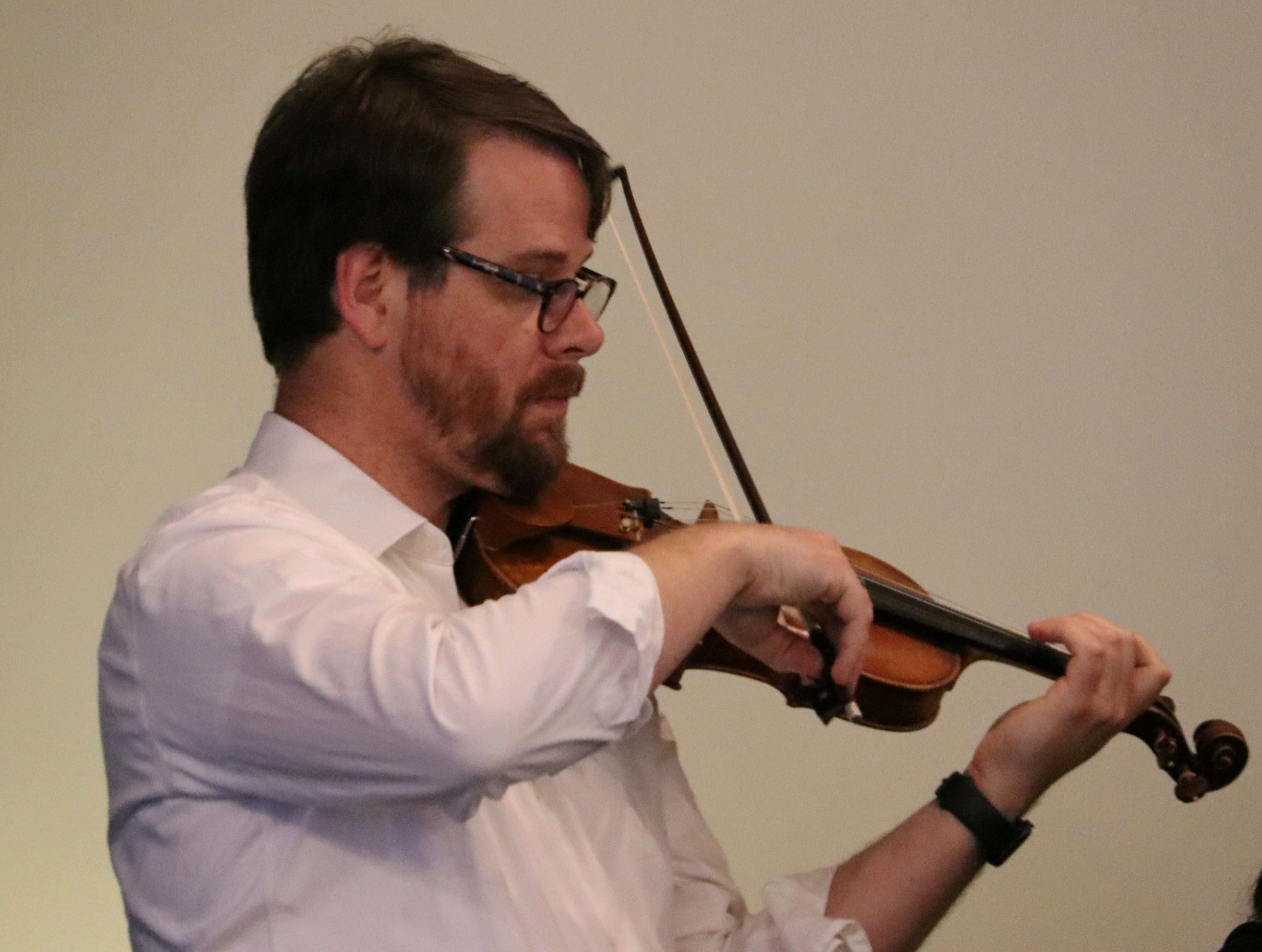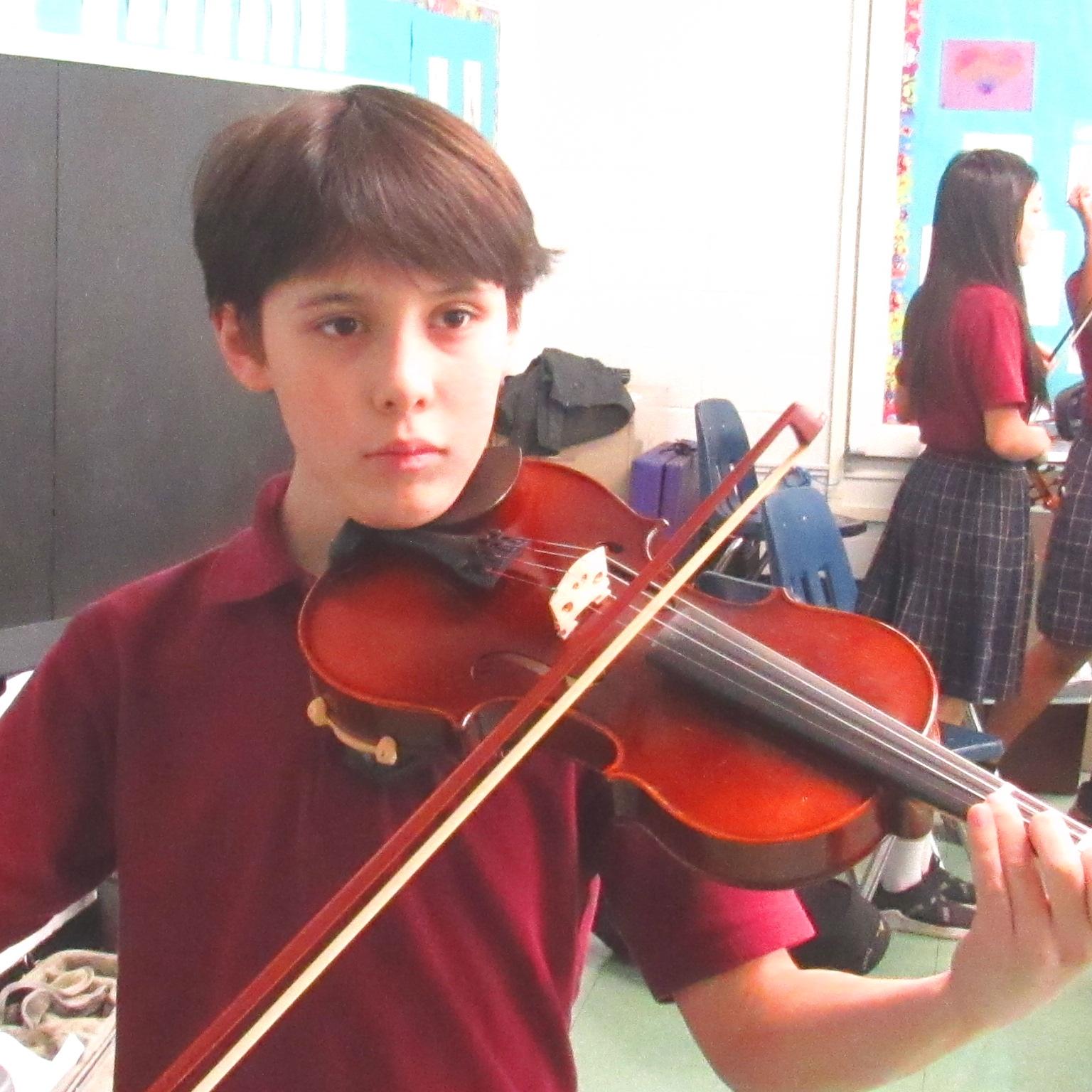
Fine Arts
Visual Art
The art program at St. Mary School incorporates a very hands-on approach to learning about art and its processes. Our students learn by creating their own works of art! The art elements and principles, and the history and cultures of art are sprinkled into the lessons as an introduction or during the process. Art skills and techniques are also introduced based on the levels of our students. Our art classes are enjoyable and fun, and perhaps a bit messy sometimes, but our students surprise and delight us every day with their talent and insight!
K-3 Creative Music
What a fun and rewarding opportunity to learn all about music. In this exciting music class the student will gain knowledge of music notation, signs, symbols, terms, history, theory, composition, and composers.
Methods and techniques in vocal and instrumental music will also be included for that hands/voice-on experience.
Students in creative music will be exploring music through movement, listening, singing, hands on activities and instruments such as orff mallet and percussion instruments, boomwhackers and recorders in 3rd grade
Grades kindergarten-3rd meet once a week. Ensembles and choirs are created for recitals, children mass, and performances.


Band/Grades 4 & 5
Middle School Grades 6-8
A fun and rewarding opportunity to introduce students to woodwind, percussion, and brass instruments.
Students will learn techniques and methods in playing, reading music notation, understand musical signs, symbols and terms. Students will also gain knowledge in music history, theory, and composition.
Levels of experience vary from the beginner to advanced.
Suzuki Violin
Suzuki Violin instructions is made available for all students K-8
What is the Suzuki Method?
More than forty years ago, Suzuki realized the implications of the fact that children the world over learn to speak their native language with ease. He began to apply the basic principles of language acquisition to the learning of music, and called his method the mother-tongue approach. The ideas of parent responsibility, loving encouragement, constant repetition, etc., are some of the special features of the Suzuki approach.
Parent Involvement
As when a child learns to talk, parents are involved in the musical learning of their child. They attend lessons with the child and serve as "home teachers" during the week. One parent often learns to play before the child, so that s/he understands what the child is expected to do. Parents work with the teacher to create an enjoyable learning environment.
In the Saint Mary School Violin Program, most parents are unable to attend the lessons. Therefore a DVD has been made of each step being taught. It is the parent responsibility to watch the DVD and then practice with your child as "home teacher". For music not on the DVD, YouTube videos are available on this website.
The early years are crucial for developing mental processes and muscle coordination. Listening to music should begin at birth; formal training may begin at age three or four, but it is never too late to begin.
Listening
Children learn words after hearing them spoken hundreds of times by others. Listening to music every day is important, especially listening to pieces in the Suzuki repertoire so the child knows them immediately.
Repetition
Constant repetition is essential in learning to play an instrument. Children do not learn a word or piece of music and then discard it. They add it to their vocabulary or repertoire, gradually using it in new and more sophisticated ways.
Encouragement
As with language, the child's effort to learn an instrument should be met with sincere praise and encouragement. Each child learns at his/her own rate, building on small steps so that each one can be mastered. Children are also encouraged to support each other's efforts, fostering an attitude of generosity and cooperation.
Learning with Other Children
The Group situation stimulates children to learn from each other. Children are always excited to share what they have learned with their peers.
Graded Repertoire
Children do not practice exercises to learn to talk, but use language for its natural purpose of communication and self-expression. Pieces in the Suzuki repertoire are designed to present technical problems to be learned in the context of the music rather than through dry technical exercises.
Delayed Reading
Children learn to read after their ability to talk has been well established. In the same way, children should develop basic technical competence on their instruments before being taught to read music. At Saint Mary School reading preparations begin in 2nd grade and formal reading in the 4th grade. For information on the Suzuki method: www.suzukiassociation.org





Choir
Choir is a year-long performance class that teaches the basics of good choral singing and basic musicianship. Students learn and perform a varied repertoire throughout the year that includes songs in different styles. In addition, they learn how to sing with proper vocal technique and how to read music.Choir students become sharper listeners, better audience members, and develop an increased appreciation for music.
Students learn to read music and the mechanics of proper voice control, including how body position and posture can improve their singing ability.
